
|
|
|
|
|
For most of the country, much-needed rain has finally arrived. The extreme heat and prolonged dry spell have played havoc with many farmers' plans this summer and caused concerns over feed supply.
Despite the arrival of rain, the consequences of the dry weather will inevitably influence grassland management for the rest of the season. In this final issue of Forage Bites for 2022, we give you the latest advice on what needs to be considered before fields are closed for the winter.
As always, we offer practical solutions to today’s demands in the three core phases of the production cycle – Sow, Nurture, Improve.
Don’t forget the Forage App is free to download, giving you a wealth of resources and features to hand with decision-making tools. For more information and links to download this FREE app, visit: corteva.co.uk/forage or simply scan the QR code.
|

|
|
|
|
|
Reseeding – safeguard your new-sown leys
|
Late summer/early autumn is a popular time for reseeding and even though it may be delayed a bit this year, it can still happen. However, autumn reseeds, particularly when sown later than usual, experience greater competition from weeds.
Weeds compete for space, light, nutrients and moisture, smothering new grass. So, new leys should be checked regularly for weed infestations and treated without delay. Even in small numbers, weeds threaten future productivity and are worth controlling before they become a more significant problem. They are also easier and cheaper to control when small before the roots have had a chance to grow too deeply.
Envy® is particularly well suited to autumn reseeds as it can be applied any time until 30th November at 1-1.5 litres/ha. Its wide weed spectrum includes chickweed, mayweed, buttercups, dandelions and seedling docks.
To learn more about controlling weeds in new-sown leys, watch our new video here.
Need help controlling docks or thistles? Check out the Forage app for more useful videos!
|
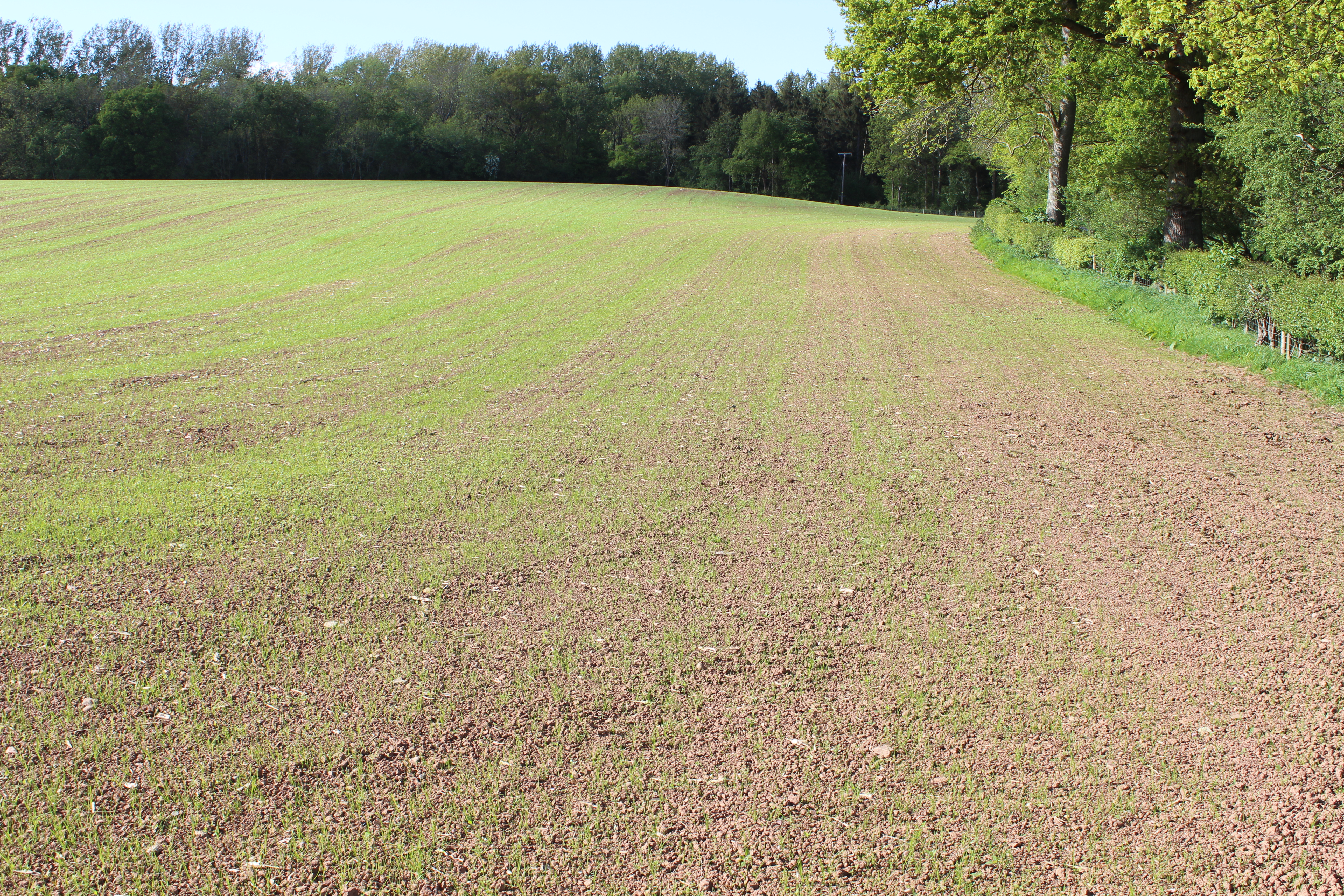
|
|
|
|
|
Targets docks this autumn
|
Contrary to popular opinion, docks can be controlled in the autumn, as opposed to only in the spring, so if the opportunity was missed earlier in the year, it’s not too late but, wait until it has rained.
During autumn docks are usually preparing for winter, drawing nutrients down to their roots. This year is slightly different; they are still alive and looking green in the field because they are accessing moisture low down in the soil but won’t grow until it has rained. When that’s happened and they are actively growing again, treat them with a translocated herbicide such as Doxstar® Pro, so it’s drawn down into the roots giving effective long-term control.
Three to four weeks after the last silage cut is usually a good benchmark, but given this year’s dry conditions assess the plants first.
Come springtime, the docks will be gone and won’t be competing for nutrients with your grass when slurry or fertiliser is applied. It will also be one less thing to do during the busy spring period.
To find out more about how to control docks successfully, watch our new video here
|
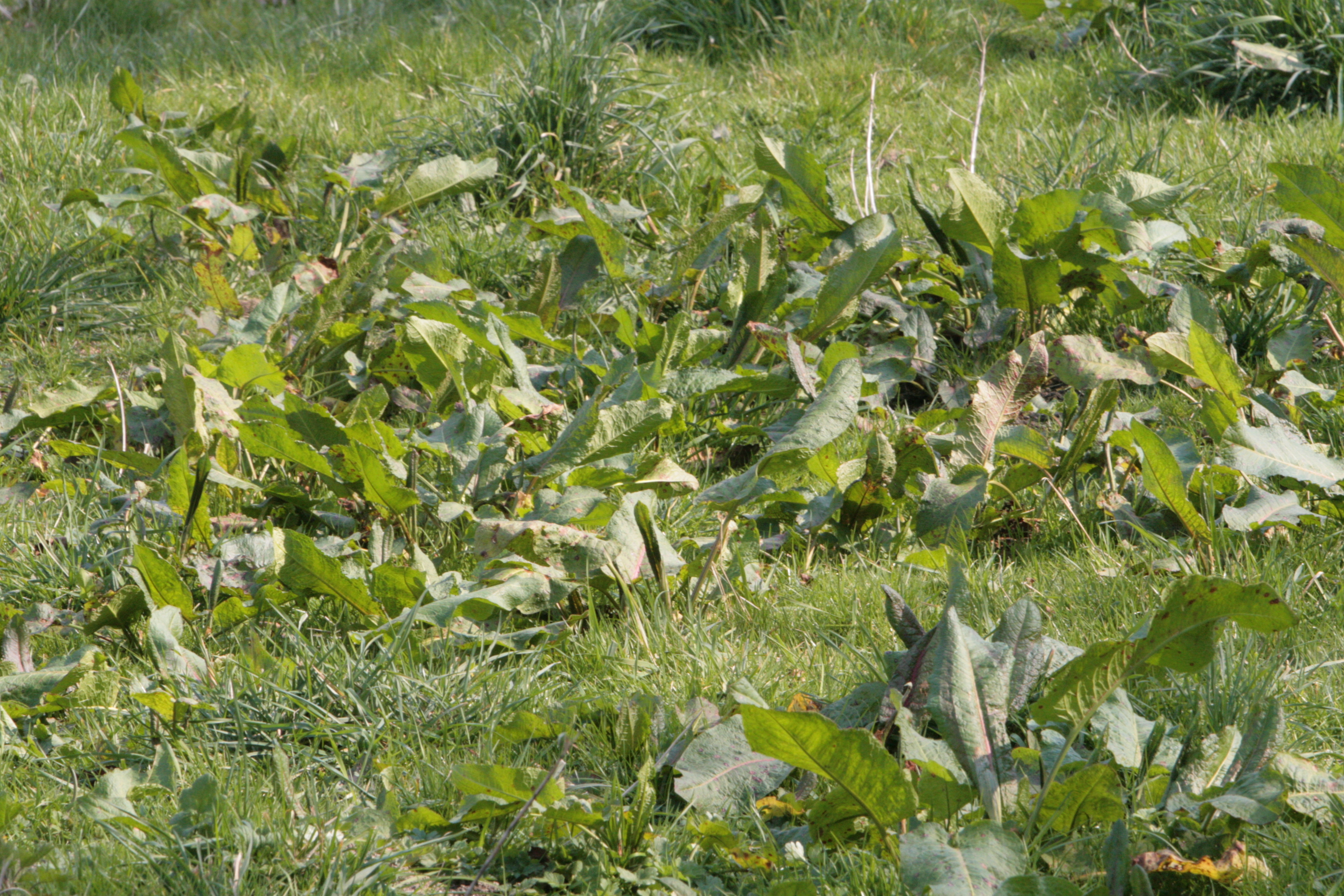
|
|
|
|
|
Ideally, weed control is carried out when weeds are growing actively and before flowering. In reality this isn’t always possible due to other demands on the farm or unsuitable weather conditions.
If weeds have gone past the active growth stage or even flowering, treatment is not as effective because it isn’t drawn down into the plant roots. In this situation, topping is the answer. It stops perennial weeds from becoming too big and creates a uniform regrowth before treatment is applied. Once topped, allow weeds to regrow for about three weeks before applying a translocated herbicide.
As advised previously, topping is only a short-term solution for weed control. It doesn’t reach the roots and can have detrimental effects on the plant structure, making effective control harder to achieve. Find out more in our June edition of Forage Bites by clicking here.
|
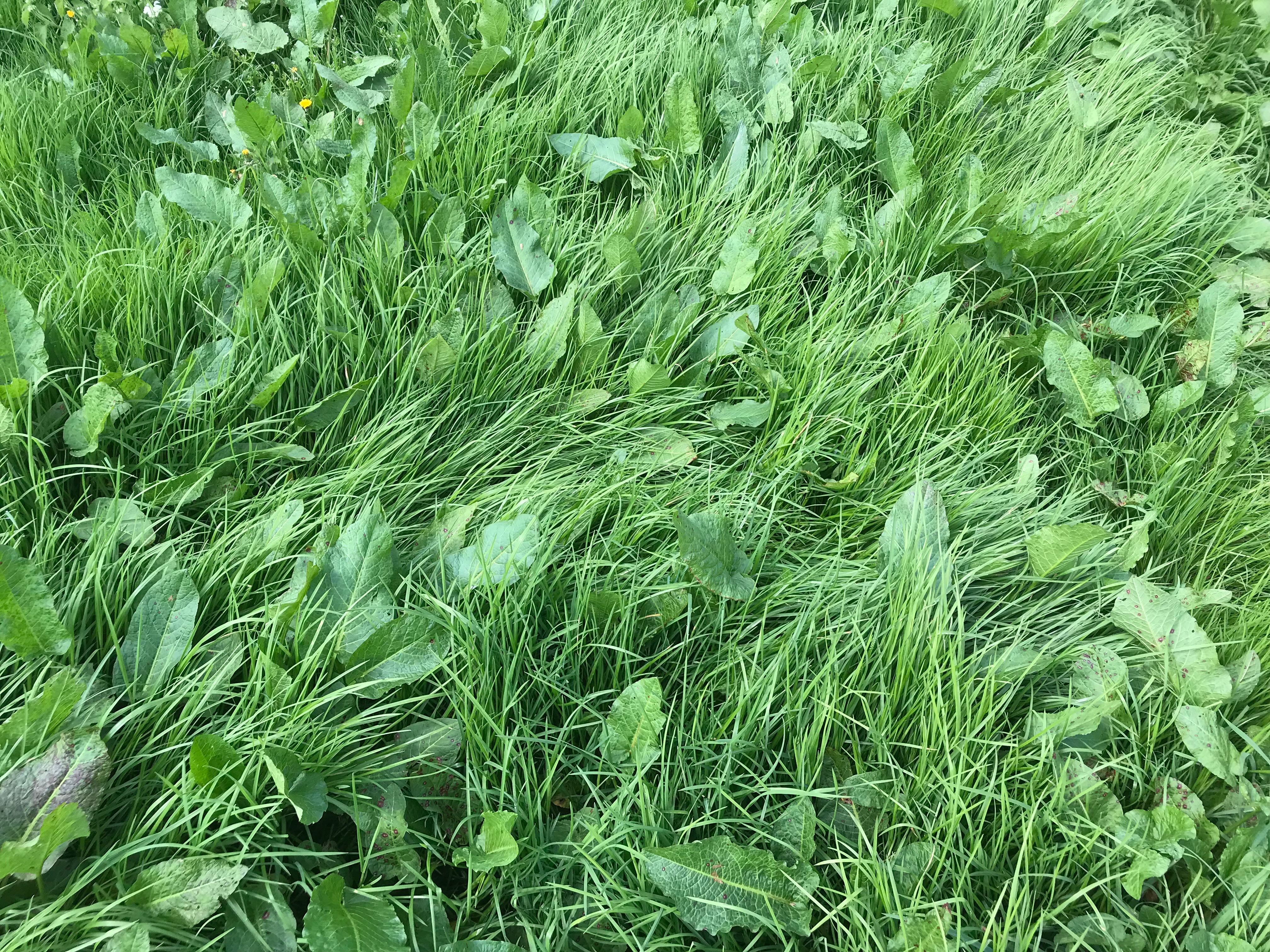
|
|
|
Controlling buttercups in the autumn
|
Although spring is the best time to control buttercups, if that opportunity was missed there hasn’t been another chance since June with it being so dry; but all is not lost. As with docks, when it has rained it’s important to treat them so they are removed by the time grass is trying to grow in the spring. They can be treated with Envy at 2.0 litres/ha in 200-400 litres/ha until 30th November.
|
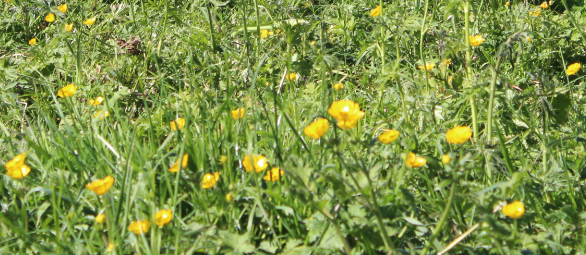
|
|
|
|
|
How spraying is carried out may also need to change this year after this summer’s dry weather and the drought stress suffered by many areas of grassland. Where application by boom sprayer is inappropriate, using a knapsack for spot treatments is a better alternative. In this situation, Grazon® Pro is ideal for treating weeds without affecting the stressed grass.
When using a knapsack, the sprayer operator must undergo formal training to hold the required licence. Grandfather rights have ended with no new ones being issued. Contact your local forage specialist or call our technical hotline on 0800 689 8899 for more information.
|
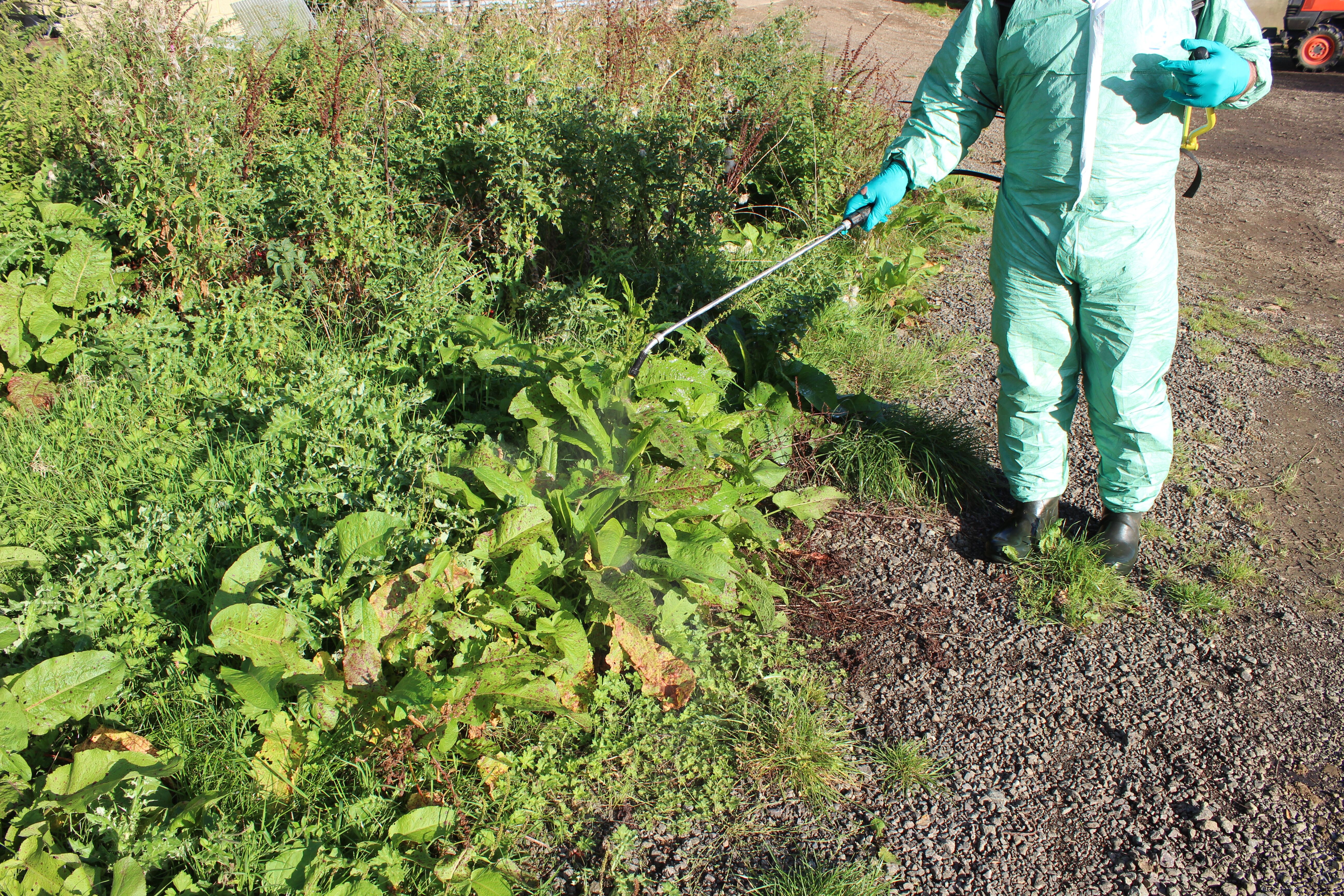
|
|
|
Minimum water volumes are a rule, not a guide
|
Spraying grassland can be challenging for many reasons. More uneven and unpredictable terrain results in slower travelling and longer spraying times so it can be tempting to reduce water volumes to save time and money.
However, minimum water volumes are set for a reason – they are the most efficient and safest way to apply the product. Reducing water volumes delivers a higher concentration of product which can scorch leaves and prevent uptake into the plant and roots. You may also over-apply, risking run off and contamination of water sources. In addition, there could be legal implications as concentration levels are an important part of product registration.
We strongly recommend following the water volumes on the product label.
|
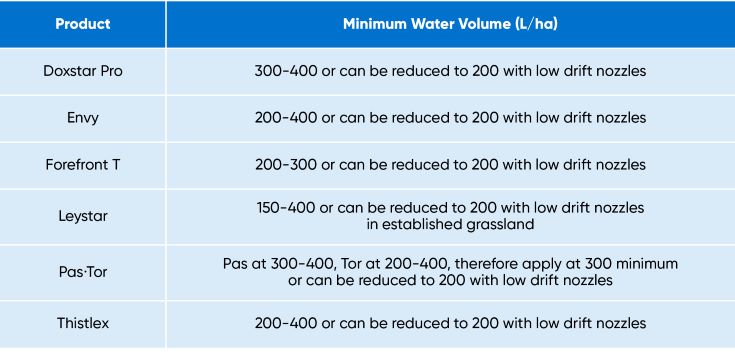
|
|
|
Deadline approaching for clopyralid label changes
|
Labels for ALL authorisations of products containing clopyralid with a label use on grassland will soon have additional restrictions. Products will no longer be available for sale after the end of 31st October 2022 and products will need to be used on farm by 31st October 2023.
The change to clopyralid labelling is driven by environmental concerns. Demand for farm manure has increased in response to the phasing out of peat-based compost. The proliferation of using mulches and not digging in manures by gardeners means plant material takes longer to breakdown – including clopyralid residues. This impacts sensitive plants.
We now advise products containing clopyralid (Thistlex®, Pas®·Tor® Agronomy Pack and Leystar®) should not be used on grass cut for animal feed (i.e. fresh cut grass, silage, hay and haylage), fodder or bedding, nor for composting or mulching within one year of treatment, and should not be used on grassland grazed by horses and ponies.
Labels for clopyralid-containing products used on grassland will be updated to reflect these changes in use.
Contact your local forage specialist or call our technical hotline on 0800 689 8899 for more information.
|
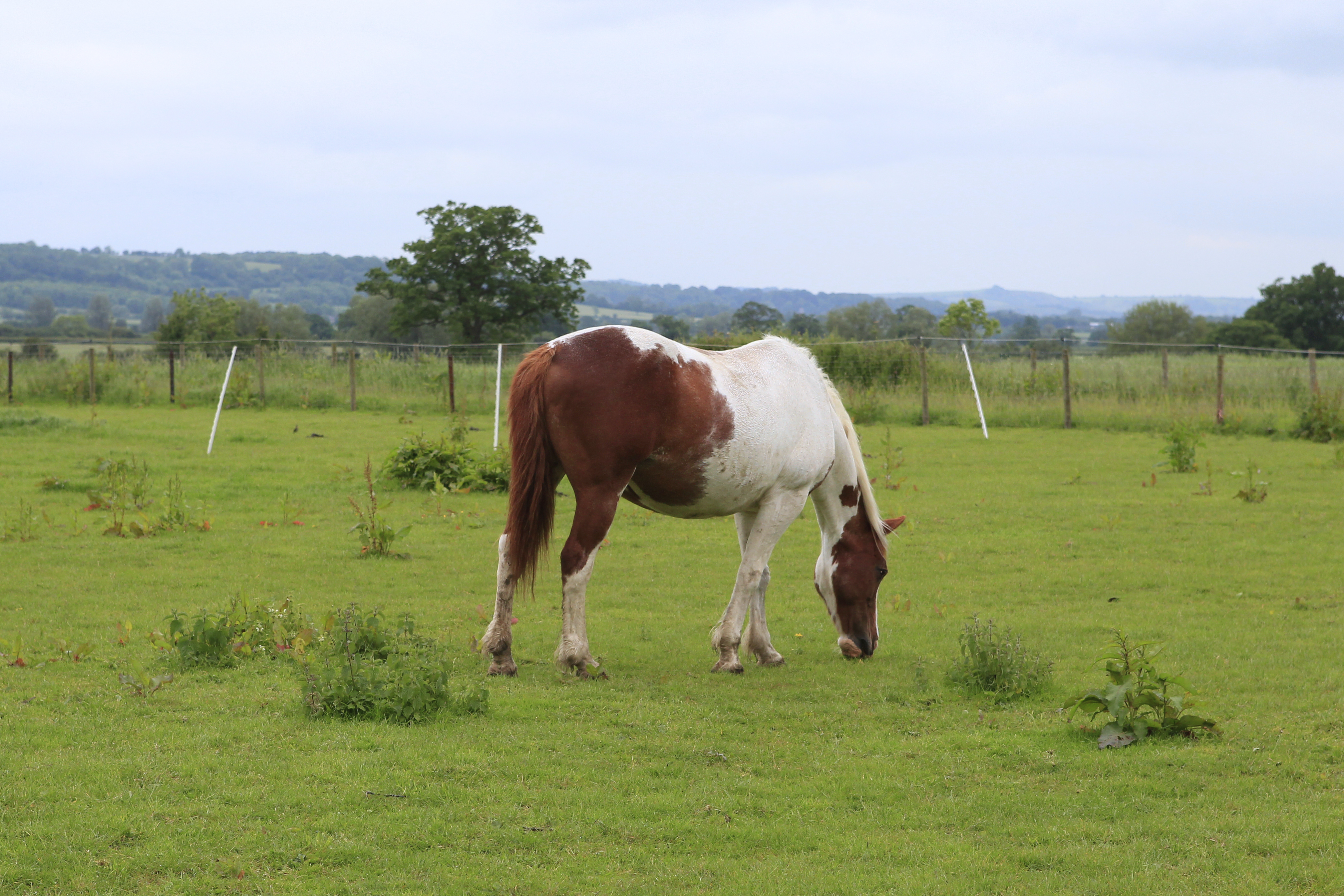
|
|
|
|
|
Maximise maize harvest with silage inoculants
|
The dry summer has stalled grass growth and winter forage stocks are already being used on many farms. Preserving your maize harvest is therefore more of a priority than ever - every extra tonne preserved is valuable.
As a high energy crop, maize silage is an ideal food for bacteria reducing the silage quality and putting milk production in jeopardy. Using an inoculant takes out these harmful bacteria. Each inoculant is designed for a specific purpose so when selecting the right product, consider the particular challenges you are looking to overcome.
|
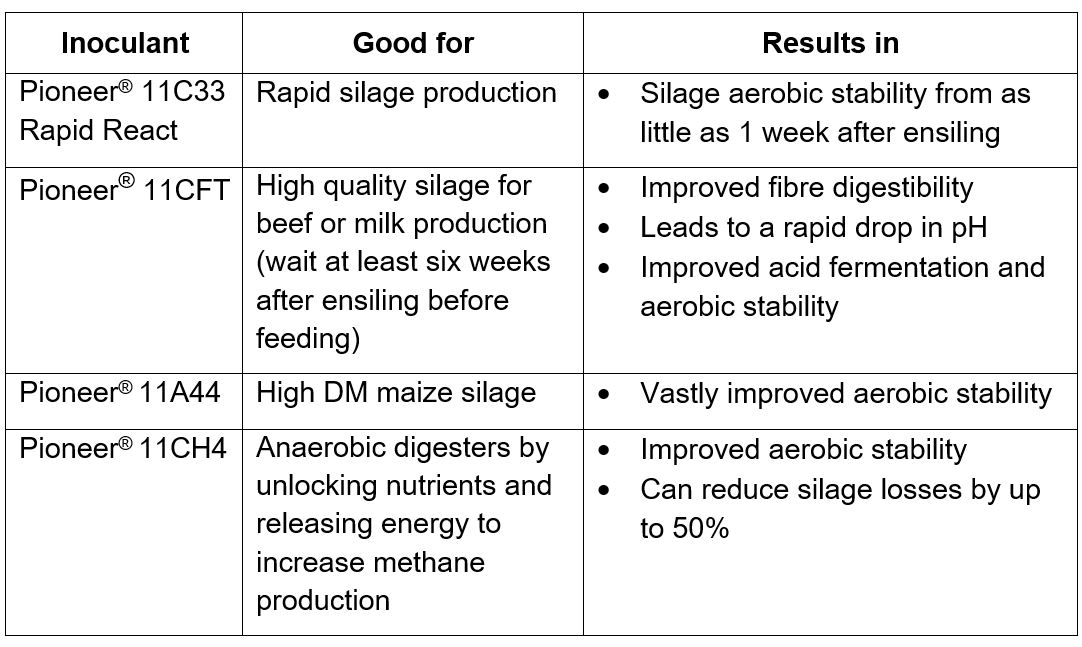
|
|
|
Managing maize after a drought
|
Drought-stressed maize creates many challenges for forage and grain growers. Read our latest article addressing the questions and concerns that growers face when harvesting maize for silage under moderate to severe drought stress by clicking here.
|
|
|
|
|
Q: Is it too late to treat docks in the autumn?
A: No. During autumn docks are preparing for winter by drawing nutrients down to their roots. This provides a good opportunity for a translocated herbicide such as Doxstar Pro to be taken down into the roots as well giving effective control.
Q. Why could not following minimum water volume labels be illegal?
A: Concentration levels of a chemical are an important part of product registration. Using less water increases the concentration levels above the conditions set out in the product registration. It may also increase exposure risk for contractors and run-off into watercourses.
Q: When do I need to stop using clopyralid-containing products on my farm?
A: All products containing clopyralid must be used on farm before 31st October 2023. They will no longer be available for sale after the end of October this year.
Q: What is the impact of high dry matter (DM) levels in maize silage?
A: High DM levels make crops susceptible to aerobic instability, leading to poor fermentation and loss of valuable dry matter. Inefficient fermentation also erodes sugar levels in the silage, leaving it lower in both DM and sugar than necessary for providing optimum nutrition.
Q: Where can I find more information of forage management?
A: New this month in addition to our free Forage App, we are offering the Forage Hub found on the Corteva Agriscience website. In a year when maximising the value of homegrown forage is more important than ever, the Hub is a go-to resource on forage management for livestock farmers. Click here to access the Hub.
|
|
|
Your local Corteva Agriscience Forage Experts:
|

|
|
|
|
Use plant protection products safely. Always read the label and product information before use. For further information including warning phrases and symbols refer to label.
®™ Trademarks Corteva Agriscience Limited and its affiliated companies. All other brand names are trademarks of other manufacturers for which proprietary rights may exist.
Doxstar® Pro contains fluroxypyr and triclopyr, Envy® contains fluroxypyr and florasulam, Forefront® T contains aminopyralid and triclopyr, Grazon® Pro contains clopyralid and triclopyr, Leystar® contains fluroxypyr, clopyralid and florasulam, Prevail® contains clopyralid and triclopyr, Tor® contains clopyralid, fluroxypyr and triclopyr, Thistlex® contains clopyralid and triclopyr.
|

|
|
|
|
|